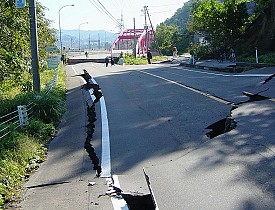Why and How to Use Earthquake Straps
 Earthquake straps are a must-have if you live anywhere prone to geological activity. They’ll hold heavy items of furniture in place during an earthquake to reduce the risk of damage and injury, and are especially recommended for bookcases, which can deal considerable damage if they topple. Consider the straps for appliances like fridges and water heaters, too. Plumbers in San Francisco and other earthquake-prone areas should be familiar with installing earthquake straps on water heaters. Some insurance companies actually offer a discount if you install earthquake straps and similar safety measures, so be sure to check your homeowner’s insurance policy.
Earthquake straps are a must-have if you live anywhere prone to geological activity. They’ll hold heavy items of furniture in place during an earthquake to reduce the risk of damage and injury, and are especially recommended for bookcases, which can deal considerable damage if they topple. Consider the straps for appliances like fridges and water heaters, too. Plumbers in San Francisco and other earthquake-prone areas should be familiar with installing earthquake straps on water heaters. Some insurance companies actually offer a discount if you install earthquake straps and similar safety measures, so be sure to check your homeowner’s insurance policy.
Buy the right straps and equipment
Hardware and home supply stores typically sell earthquake straps, which can be made from plastic or metal, or can order them if you need them. Make sure to check their weight rating and confirm they are safe for their intended use, as not all strap products are suitable. In terms of equipment, you’ll need anchors and a drill with appropriate bits if you plan to install the straps yourself. If you prefer to leave the job to a pro, carpenters in earthquake prone areas are familiar with installing earthquake straps.
Anchor to a stud
First unload the appliance or furniture piece, as necessary, and pull it from the wall to locate the studs. Use a stud-finding tool or rely on the trick of tapping the wall and listening for the heavier sound indicative of a stud rather than insulation. It’s important to anchor to a stud, because otherwise the strap may pull out during an earthquake. Depending on the design of your product, you may need to attach it to the wall first or to the furniture first, so check the directions carefully. If you’re working in masonry, concrete, or drywall, use an anchor into the stud; if you don’t, the screw could pull out during an earthquake, sending the furniture toppling.
Prepare the item
Prepare the item you’re anchoring by drilling holes into the site where you’ll be inserting the hardware, if directed to do so. Make sure to choose a point where the furniture is solid, rather than a weak point like a joint that could fracture when you drill or under the strain of an earthquake. Follow the installation directions for the strap carefully, taking care to apply the screws or fixative glue exactly as directed to avoid an unsafe installation.
Level and test
As you anchor the furniture to the wall, make sure it’s level and even. If it’s not, it could unbalance in an earthquake and cause problems. When you’re satisfied that it’s in the right place, you can complete the installation and test it by pulling on it with an assistant. The furniture shouldn’t move, indicating that it is firmly anchored into a stud in the wall and won’t go anywhere under the stress of mild to medium shaking. Then you can load it back up with books, china, or whatever else it might hold.
Be extra safe
For additional safety, consider installing barrier straps or strips at the front of the furniture if it’s open or has doors that might easily swing out. These prevent items from tipping out in the event of an earthquake; for something like a bookcase, this can avoid injuries and a huge mess if the bookcase stays in place but all the books go flying. The straps also prevent earthquake damage to prized possessions like china and antique knickknacks that might otherwise topple out. Adhesive gels and tapes are available for specialty items like sculptures, as well.
s.e. smith writes for Networx.com.
Updated June 19, 2018.
Looking for a Pro? Call us (866) 441-6648

Remodeling Average Costs
Remodeling Contractors Experiences

Replacement Of A Light Fixture That Literally Fell Off The Ceiling

Handyman Used Brains As Well As Brawn To Move A 500 Pound Fridge



